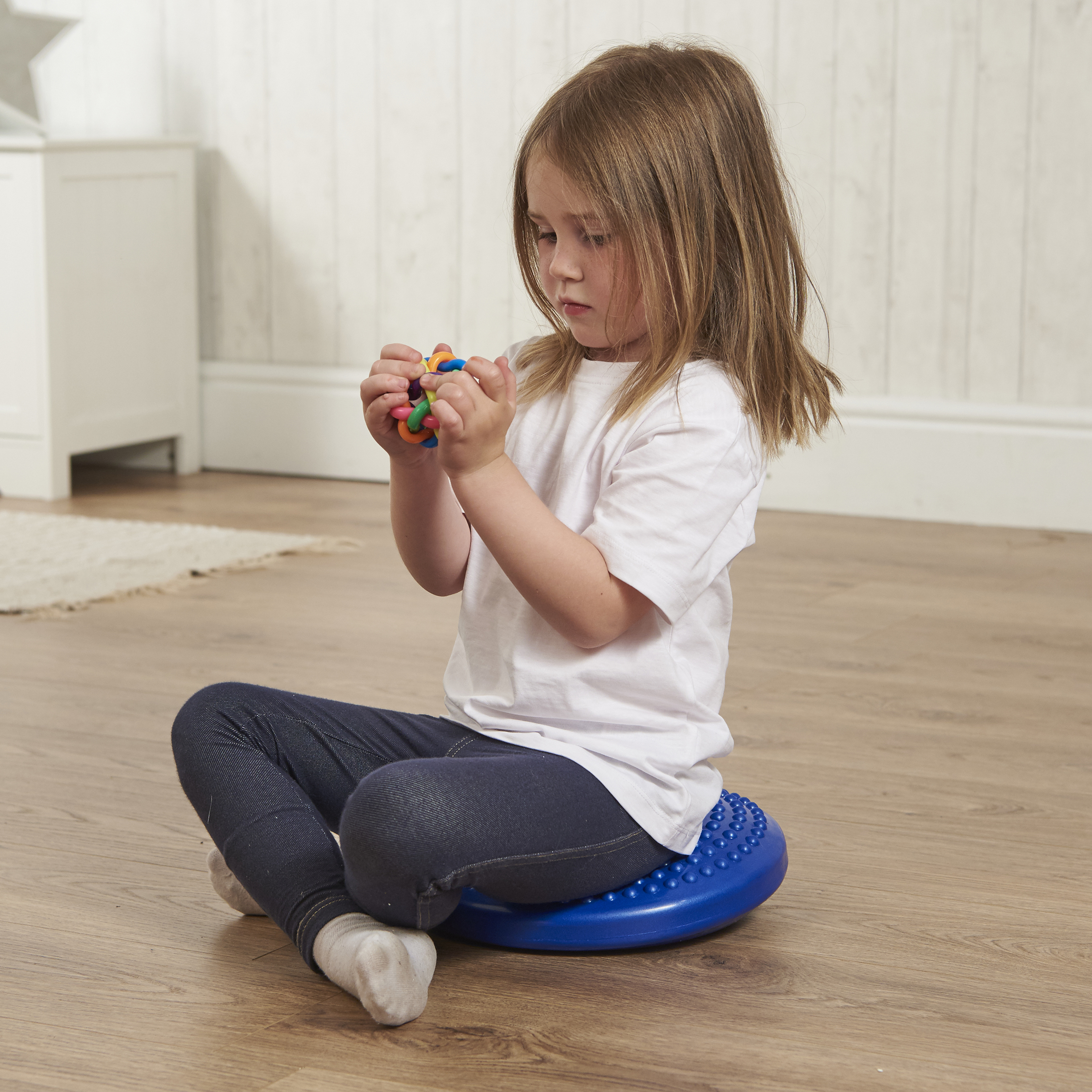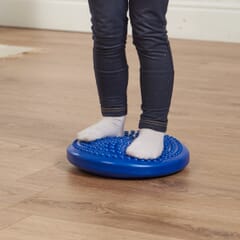Get exclusive deals you won't find anywhere else straight to your inbox.

10 Ways To Use A Wobble Cushion
Working with a wobble cushion can provide various benefits for children with autism or sensory processing conditions. They can help promote sensory integration, improve focus and attention, and enhance balance and coordination. In this blog we share 10 ways that you can use a wobble cushion.
Wobble cushions are relatively inexpensive, with Sensory Direct Junior Wobble Cushions starting from £18.49 and Senior Wobble Cushions from £20.50. Easy to inflate and strong enough to sit or even stand on they are a versatile and cost-effective sensory resource. Ideal for home or school use.
To help you get the most out of your Wobble Cushion, we’ve put together 10 different ways to use them.
#1 Seating Aid
Place the wobble cushion on a chair or floor cushion to create an unstable seating surface. This can help your child improve their posture and core strength while engaging their muscles to maintain balance.
#2 Group Activities
For after school activities, during circle time or talks, have your child sit on the wobble cushion. The cushion's instability can provide sensory input and help the child maintain focus and attention during the session.
#3 Balance Training
Encourage your child to stand on the wobble cushion while maintaining balance. This activity can enhance their coordination skills and proprioception, improving their body awareness.
#4 Sensory Breaks
Incorporate the wobble cushion into sensory breaks. Allow your child to sit or lay on the cushion while engaging in deep breathing exercises or sensory activities like listening to calming music or squeezing a stress ball.
#5 Homework Support
Place the wobble cushion on a chair or the floor to create an active homework station. The dynamic surface can help your child stay engaged and focused while working on tasks.
#6 Sensory Pathways
Create a sensory pathway by placing multiple wobble cushions on the floor in a designated path. Your child can walk, jump, or hop from cushion to cushion, engaging their proprioceptive and vestibular systems.
#7 Coordination Games
Play coordination games with your child using the wobble cushion. For example, have them toss a beanbag to a target while standing on the cushion, challenging their balance and coordination skills.
#8 Desk Support
Place the wobble cushion on your child's desk chair to provide sensory input while they work. The cushion's movement can help them stay engaged and focused during academic tasks.
#9 Seated Exercises
Guide your child through a series of seated exercises while they sit on the wobble cushion. This can include leg lifts, toe taps, or trunk rotations, promoting motor skills development.
#10 Sensory Integration Activities
Combine the wobble cushion with other sensory integration activities, such as tossing and catching a beanbag while sitting or standing on the cushion. These activities can enhance your child's sensory processing skills.
Remember, it's essential to adapt these activities to suit the individual needs and preferences of your child. Always observe their reactions and adjust accordingly to ensure a positive and beneficial experience.



